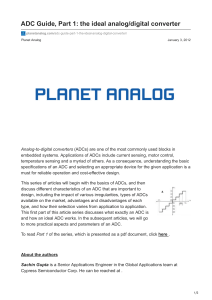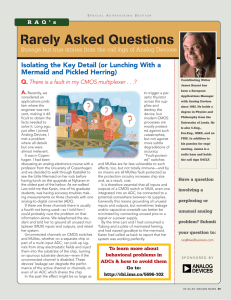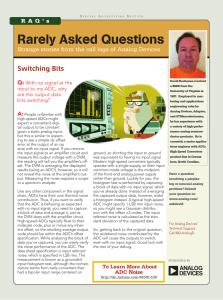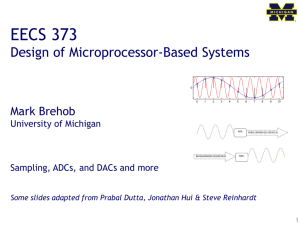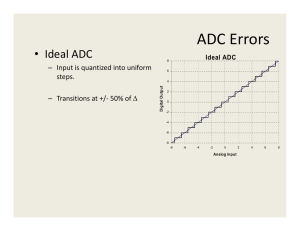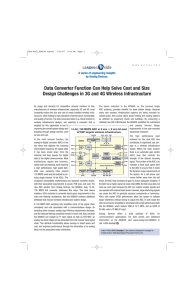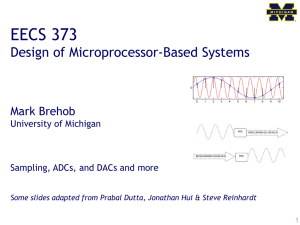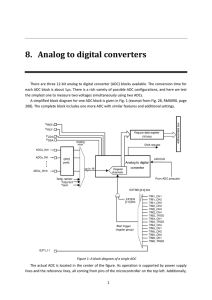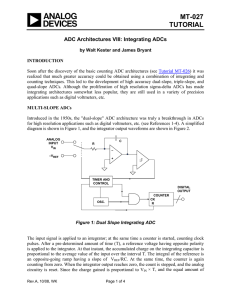Rarely Asked Questions Things (animals and ADCs) are not always
advertisement
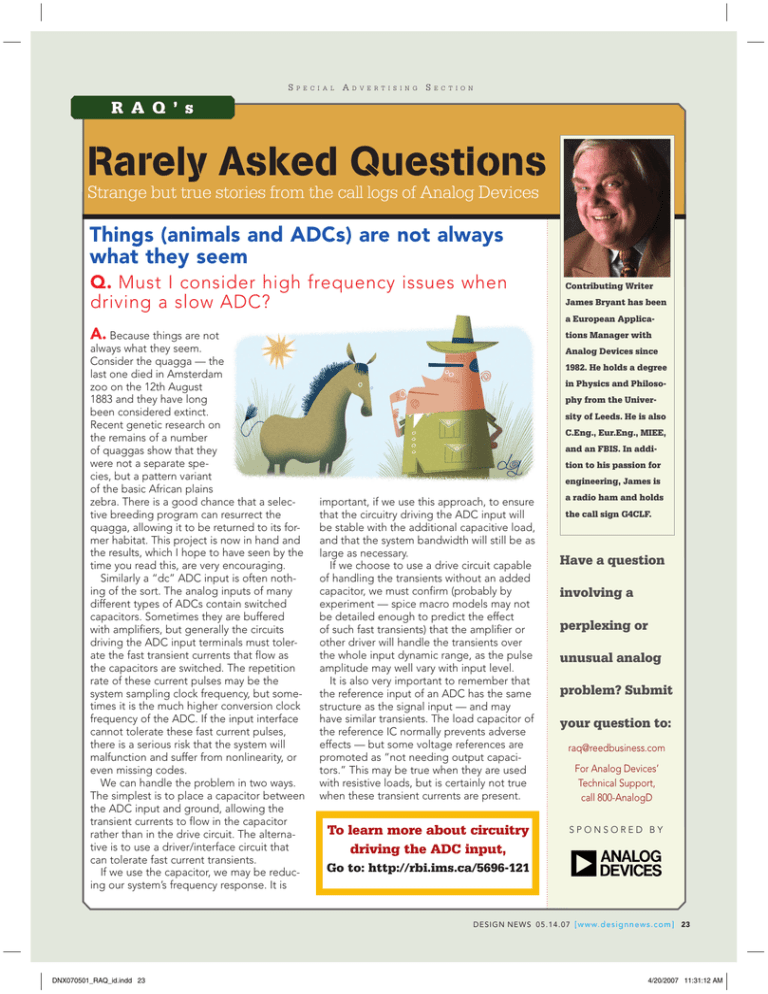
S P E C I A L A D V E R T I S I N G S E C T I O N R A Q ’ s Rarely Asked Questions Strange but true stories from the call logs of Analog Devices Things (animals and ADCs) are not always what they seem Q. Must I consider high frequency issues when driving a slow ADC? Contributing Writer James Bryant has been a European Applica- A. Because things are not always what they seem. Consider the quagga — the last one died in Amsterdam zoo on the 12th August 1883 and they have long been considered extinct. Recent genetic research on the remains of a number of quaggas show that they were not a separate species, but a pattern variant of the basic African plains zebra. There is a good chance that a selective breeding program can resurrect the quagga, allowing it to be returned to its former habitat. This project is now in hand and the results, which I hope to have seen by the time you read this, are very encouraging. Similarly a “dc” ADC input is often nothing of the sort. The analog inputs of many different types of ADCs contain switched capacitors. Sometimes they are buffered with amplifiers, but generally the circuits driving the ADC input terminals must tolerate the fast transient currents that flow as the capacitors are switched. The repetition rate of these current pulses may be the system sampling clock frequency, but sometimes it is the much higher conversion clock frequency of the ADC. If the input interface cannot tolerate these fast current pulses, there is a serious risk that the system will malfunction and suffer from nonlinearity, or even missing codes. We can handle the problem in two ways. The simplest is to place a capacitor between the ADC input and ground, allowing the transient currents to flow in the capacitor rather than in the drive circuit. The alternative is to use a driver/interface circuit that can tolerate fast current transients. If we use the capacitor, we may be reducing our system’s frequency response. It is tions Manager with Analog Devices since 1982. He holds a degree in Physics and Philosophy from the University of Leeds. He is also C.Eng., Eur.Eng., MIEE, and an FBIS. In addition to his passion for engineering, James is important, if we use this approach, to ensure that the circuitry driving the ADC input will be stable with the additional capacitive load, and that the system bandwidth will still be as large as necessary. If we choose to use a drive circuit capable of handling the transients without an added capacitor, we must confirm (probably by experiment — spice macro models may not be detailed enough to predict the effect of such fast transients) that the amplifier or other driver will handle the transients over the whole input dynamic range, as the pulse amplitude may well vary with input level. It is also very important to remember that the reference input of an ADC has the same structure as the signal input — and may have similar transients. The load capacitor of the reference IC normally prevents adverse effects — but some voltage references are promoted as “not needing output capacitors.” This may be true when they are used with resistive loads, but is certainly not true when these transient currents are present. To learn more about circuitry driving the ADC input, a radio ham and holds the call sign G4CLF. Have a question involving a perplexing or unusual analog problem? Submit your question to: raq@reedbusiness.com For Analog Devices’ Technical Support, call 800-AnalogD SPONSORED BY Go to: http://rbi.ims.ca/5696-121 D E S I G N N E W S 0 5 . 1 4 . 0 7 [ w w w. d e s i g n n e w s . c o m ] DNX070501_RAQ_id.indd 23 23 4/20/2007 11:31:12 AM
